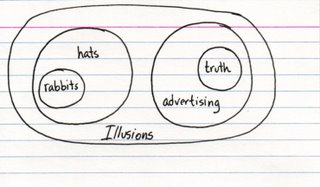(Or: How the activist left learned to stop worrying and love identity politics.)
Here and elsewhere I spend much time railing against the notion that “identity” is somehow distinct from “politics”, or that “identity politics” is anathema to the idealised “real politics” of class and ideology. I don’t accept that those with politicised identities — in our context most often women, MÄori and LGBTI people — ought to fall in behind the straight white able-bodied men of The Cause on the understanding that The Cause will lend its support to their subordinate issues when the time is right. Moreover, I don’t accept that a person’s politics can meaningfully be divorced from their identity. Identity is politics. I am far from alone in these views.
Recently it has come to my attention that many of those who claim to oppose “identity politics” are pretty happy with it too, given the right circumstances. The contest between Grant Robertson, Shane Jones and David Cunliffe provides a good example.
Right out of the gate the contest was framed in terms of identity — Grant Robertson’s sexual identity. “Is New Zealand Ready For A Gay Prime Minister?”, the headlines asked, proceeding then to draw dubious links between unscientific vox-pops and the reckons of sundry pundits, all of whom were terribly keen to assure us that they, personally, were ready, even if the country isn’t yet. But while Robertson’s identity is what it is, his campaign is not an identity politics campaign in any meaningful way. In this it differs sharply from the campaigns of the other two contenders.
Shane Jones
Shane Jones is expressly running an identity politics campaign: he’s MÄori, and his goal to win all five seven of the MÄori electorates for Labour is one of many explicit appeals to his MÄoritanga, and well he might appeal: it is an attribute sorely lacking among our political leaders, and a particularly stark omission in Labour, with its long claim to being the, um, native party of MÄori.
But Jones’ MÄoritanga isn’t the only identity pitch: he has made overt masculinity a part of his brand. When he came clean about charging pornographic movies to Parliamentary Services, his explanation was “I’m a red-blooded male”. He recently doubled down on this in relation to Labour’s proposed gender-equality measures, saying New Zealanders didn’t want “geldings” running the country, and that “it was blue-collar, tradie, blokey voters we were missing”. His value proposition for the Labour leadership is that he can expand the party’s electoral base into the archetypally-masculine realm of the “smoko room” where such voters are said to dwell. It seems likely that this strategy will alienate a good number of female voters into the bargain.
David Cunliffe
David Cunliffe’s identity pitch is doesn’t look like an identity pitch, because we’re not used to seeing identity pitches from straight white men. But identity politics isn’t the sole domain of women and minorities — the US Republican Party has been running a long identity politics campaign for most of a decade against Barack Obama and Hillary Clinton.
Cunliffe’s claim is his identity as a guy who greets his supporters in a dozen different languages and whose announcement of a candidacy is greeted with a waiata, wearing a lei like it ain’t no thing. He is a mutual-second-best candidate for a bunch of different identity groupings — he’s male, but he has strong caucus support from Labour women, including his previous running-mate Nanaia Mahuta and marriage equality champion Louisa Wall. He’s straight, but he’s not homophobic or chauvinistic about it. He’s PÄkehÄ, but his multicultural bona fides are clear, and he has strong support from MÄori and Pasifika caucus members. He studied at Harvard, but he’s the working-class son of an Anglican minister. He’s comparatively young — Generation X — but not so young as to be seen as a whipper-snapper by the Baby Boomers. Homo Sapiens Aotearoan is David Cunliffe’s identity; a modern native of the biggest Pacific city in the world.
Grant Robertson
Grant Robertson’s campaign is quite unlike the others, which are pitched at the electorate, or parts of it. Robertson’s campaign is focused on unifying the Labour Party, on the basis that a unified party will be a more effective machine for building electoral support. His isn’t a pitch based around his individual brilliance or personal character, but his ability to organise, strategise, and forge an effective team out of his diverse and complicated group of colleagues. Robertson’s identity is a part of this — his advocacy and work in passing the marriage equality bill earlier in the year indicates where his politics lie, and make clear he’s no shirker — but this is by no means the focus.
And yet last night’s story by Brooke Sabin basically wrote Grant Robertson’s candidacy off on the basis of a series of ad-hoc buttonholes with workers at a union rally who apparently didn’t like that he was gay. Sabin reported that only two of the 40 people spoken to would support Robertson, and in the studio introduction to the piece anchor Hilary Barry inflated this to:
Labour leader hopeful Grant Robertson was dealt a blow today. Many in the religious and socially-conservative faction of the party, out in force at a rally this afternoon, don’t like that he’s gay, and won’t vote for him.
There are a swag of problems here: most obviously that repeatedly and urgently raising the issue (“not that there’s anything wrong with that”) sets the agenda. Further, the footage suggests that the only thing these vox pops were given to go on when assessing Grant Robertson’s fitness to be Prime Minister was that he was gay — so it was the only thing on the agenda. Worse yet; one respondent, when prompted to choose between Jones and Cunliffe, asked “Shane Jones … is he a gay too?” suggesting that not only was she not very well placed to make an informed assessment of the comparative merits of each candidate, but that asking her to do so anyway, taking her word as an indication of general union sentiment and then playing her naïve answer on national TV bordered on exploitation. (At least part of my assessment is shared by Neale Jones from the EPMU, who was there, and said on Twitter, “Sabin went around repeatedly badgering workers about whether they had a problem with Grant’s sexuality. Got story he wanted.”)
The Identity Agenda
Jones’ identity pitch is clear, and Cunliffe’s is less so, but not much less so. Robertson’s identity pitch is inferred from his sexuality and inflated. The only aspect of the archetypal “identity politics” candidate’s campaign which is focused on “identity politics” is the “ready for a gay PM” agenda, which is set by commentators and the media, outside Robertson’s control (but which he must tolerate, lest he be reframed as a “bitchy gay” rather than as the solidly masculine, rugby-playing sort we are possibly prepared to tolerate.)
So that’s ironic. But the deeper irony of this is that David Cunliffe is the darling of many of the people on the activist left who have railed most fiercely against “identity politics” all these years. (Check the list of endorsements here). There’s no policy to speak of in this contest — Cunliffe’s campaign is identity politics through and through, and yet the activist left loves him for it. I don’t think it’s unfair to observe that they love him, and they love it, because now it feels like their identity being prioritised in politics, as if it hasn’t ever been before. All that evil old “identity politics” they railed against before — the problem wasn’t that it was identity politics, but that it wasn’t their identity politics.
But I’m glad they love it. It works, after all. We have a strong sense of who David Cunliffe is, where he comes from and what motivates him, and that helps us understand, and more importantly to believe, his strategic vision and the policy platform he articulates. I think he genuinely does speak to a wider audience of potential Labour supporters than any recent leader, and that can only be a good thing for the party and the polity as a whole. If he wins, and I think he will, I hope it will go some distance to demonstrating that identity and ideology aren’t zero-sum; they’re complementary. Maybe once that realisation sinks in we’ll be really ready for a gay Prime Minister, or a MÄori one.



